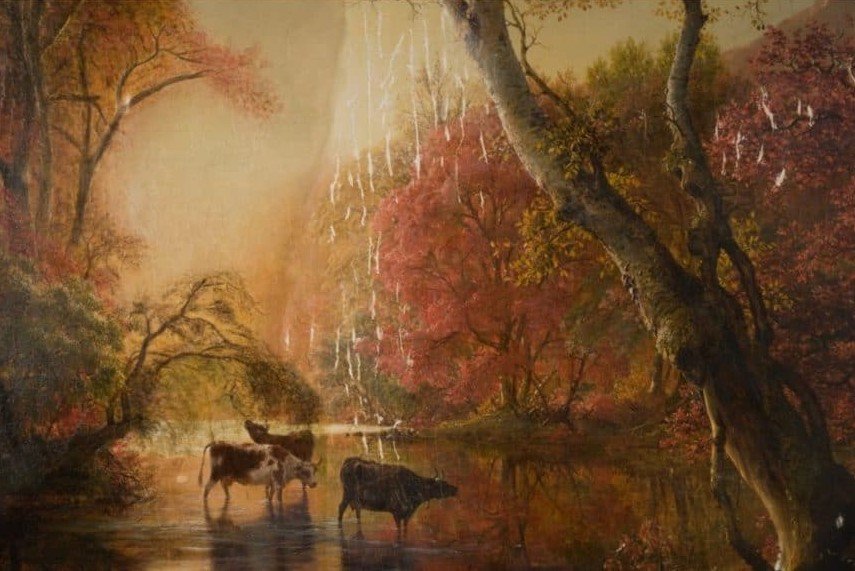
Autumn, 1856, oil on canvas, 54 x 75 7/8 in., OL.1981.32, Collection Olana State Historic Site, NYSOPRHP.
By Alan Crawford
After a long, hot and dry summer, fall is finally upon us. I don’t really know what to expect to see this season in leaf colors due to the drought-like conditions we experienced. I guess that’s what makes life so much fun, you never can quite know what to expect, and Mother Nature will often surprise us.
I see tours being offered to view areas at the estimated time of peak colors, expect area restaurants to be full as those south of us head this way to take in the majesty of scenery, and always know there will be the unavoidable fall cleanup before the snows fall.
So, just when and where did this fascination with observing the changing of seasons begin? Surprisingly, there is the opinion it dates back hundreds of years to Japan. Their tradition has a name, momijigari, which translates to “leaf hunting”. During their Heian era, dating from 794 to 1185, a renaissance occurred which placed an emphasis on the appreciation and creation of the arts. The noble families and rulers spearheaded this movement. The colors and influences of each and every season were celebrated. Texts were written to capture the soul and beauty of the changing seasons and the changing colors, one of the more influential was “The Tale of Genji” which has specific references to “An Imperial Celebration of Autumn Foliage”.
The art of this period exhibits a merging of their aesthetic love of the seasons with the Buddhist belief in “transience”, which alludes to our lives being defined by their impermanence. This also has major connections with the Shinto religion in Japan.
Earlier, and definitely by 1900, the culture of Japan became readily open to us. During the 1800’s, trading ships brought various pieces of art to us which depict this art concept from Japan. Think of some of the paintings of the Hudson River School artists and the changing landscapes they captured on canvas. Pieces of pottery arriving here had bold depictions of the changing colors of the leaves, often maple, which may have inspired some of our fascination with the fall foliage.
This love of nature, while being a passion for some, has also become a business for others. Besides tours, including boat rides up and down the Hudson River, farms host corn mazes, apple picking and a multitude of attractions in this area, all this to celebrate the changing of the season.
Frederick E. Church’s painting “Autumn” is amazing in its display of how the Hudson Valley sheds its foliage every fall. I hope you all get the opportunity and time, after being shuttered away for the past couple of years, to get out and breathe in the crisp cool air and see colors erupt in all their splendor. I know I will. While I was digging around for some of the history on leaf watching, I found a haiku, written by Upen Singh, who, in my opinion captured it all in three simple lines:
Life of Leaf
Dances to the wind
after a life fully lived
a soft falling leaf.